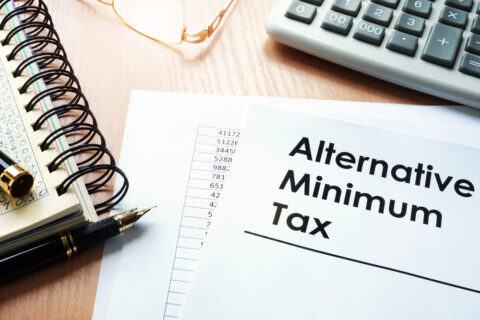The United States Supreme Court has agreed to hear California v. Texas (known as Texas v. U.S. in previous litigation) Docket No. 19-840, in which several states are arguing that the individual mandate in the Affordable Care Act (“ACA”) (as revised by Congress in late 2017) is unconstitutional. The Supreme Court has heard the case and is expected to render a decision in the first half of 2021.
Recently, a question has arisen whether, if the ACA is found to be unconstitutional in its entirety, the 3.8% Net Investment Income Tax (“NIIT”) and the 0.9% Additional Medicare Tax, could be impacted. The NIIT is imposed on individuals with adjusted gross income over $200,000 for single taxpayers and $250,000 for taxpayers filing as married filing jointly. The NIIT threshold for estates and trusts is much lower. The Additional Medicare Tax is imposed on earned income in excess of $200,000 for single taxpayers and $250,000 for taxpayers filing as married filing jointly.
We understand that most national CPA firms believe it unlikely that the Supreme Court will declare the tax unconstitutional for tax years prior to 2019 in any case, if at all. We have read similar analyses and conclusions by law firms. We concur.
Nevertheless, individuals, trusts and estates who paid a substantial amount of NIIT in 2017 and individuals who paid a substantial amount of Additional Medicare Tax may consider filing a protective claim for refund for 2017, the earliest year for which the statute of limitations is still open in normal situations.
Consequently, if a subject taxpayer filed their 2017 calendar year income tax return on or before April 15, 2018, the taxpayer has until June 15, 2021 (the substitute original due date for 2020 income tax returns for residents of TX, LA, and OK) to file a protective claim for refund (if you reside in a state other than TX, LA or OK, the date to file is May 17, 2021). Among other applications, a protective refund claim allows a taxpayer to preserve a claim in the event a tax is found to be unconstitutional after the statute of limitations has expired. If the subject taxpayer filed their tax return after June 15, 2018, they will have until three years from the date their 2017 tax return was filed to file a protective claim. What if a 2017 tax return was filed between April 15, 2018 and June 15, 2018? It is not certain if the protective claim must be claimed within three years of filing or by June 15, 2021*.
Should you file a protective claim? First, review your 2017 income tax return to determine the amount of these two surtaxes that you paid. The Additional Medicare Tax is reported on Form 8959, line 18. The NIIT is reported on Form 8960, line 17 (individuals) and line 21 (estates and trusts).
Then, consider a cost/benefit analysis. We provide you forms with this communication that you may file yourself by June 15, 2021* to make a protective claim. If the surtaxes are retroactively repealed for 2017, then you will have to perfect the claim and, most likely, have multiple communications with the IRS. We have no doubt that such dealings will be drawn out over a long period of time, considering the current state of the IRS due to the COVID-19 pandemic and the massive project for the IRS that would ensue from a Supreme Court’s ruling of retroactive repeal. We can assist you with perfecting the claim, if that should be necessary.
We believe it unlikely that the Supreme Court will declare these surtaxes unconstitutional for tax years prior to 2019, if it does indeed determine the ACA unconstitutional. However, there are no guarantees in life or litigation. We provide to you for your use a sample claim that you can use, if you wish to file a protective claim. We also provide charts for where you should file the protective claims. If you do file by June 15, 2021*, be sure to retain your proof of mailing, such as a certified mailing receipt or other approved proof of mailing.
* May 17, 2021 if you reside in a state other than Texas, Louisiana or Oklahoma
Download Protective Claim for Refund – Individual FormFind IRS Addresses for Individuals here.
Protective Claim for Refund – Trusts and Estates Form
Find IRS Addresses for Trusts and Estates here.
Latest Blog
What could happen if you don’t file your taxes? If you’re required to file a tax return but ...
The alternative minimum tax (AMT) resembles the regular federal tax system, but it has a different purpose. It’s ...
As the end of the year approaches, many people begin thinking about philanthropy. While planning your charitable giving, ...
HM&M Updates
Dallas, TX – Aug. 7, 2024 – HM&M, a Springline company (HM&M), a leading CPA firm with four ...
DALLAS, Dec. 11, 2024 – Springline Advisory, a trailblazing financial and business advisory firm, is proud to announce its partnership ...
Last month, Senior Manager, Pearl Balsara was invited to speak at the 2023 FPA DFW Annual Conference in ...










